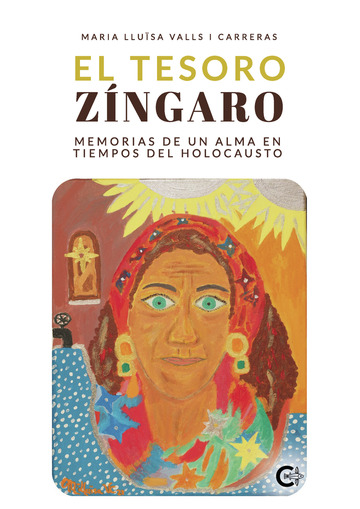Interview with Maria Lluïsa Valls Carreras. Caligrama Editorial.
 Caligrama Editorial.
Caligrama Editorial.
Interview with Maria Lluïsa Valls Carreras.
–When did you start the literary adventure?–
–In my teenage years, when I worked in a factory where you could breathe the smell of toxic products. In my sleepless nights I dedicated myself to writing poems to relieve my anxiety.–
–Why are you writing?–
–I carry it in my blood. I remember the afternoon during my childhood in which the school teacher came to our farmhouse. He insisted to my parents that I had to continue with my studies, since I had a great facility for writing.–
–How did the book «El tesoro Zíngaro» («The Gypsy treasure») came about?–
–Guided by coincidences that kept appearing in my daily life, these being the ones that propelled me, like a leaf carried by the wind, towards that ancestral and authentic people: the gypsies. Thus, I began to connect with their beautiful experiences and with their tragic fate in the Nazi death camps.–
 Book cover of «El tesoro Zíngaro» («The Gypsy treasure»).
Book cover of «El tesoro Zíngaro» («The Gypsy treasure»).
–How would you define this work?–
–As a work which avoids cliches. Created during immersions in the most hidden depths of my being and, at the same time, of the collective unconscious. Revealing at the end of the book my belief in reincarnation and that I experienced what I had described in my own skin.–
–Who are the characters and what are they like?–
–The protagonist, Sira, appears accompanied by some characters who vibrate next to the beating of the forest. Among others: her husband Drago; Ernestyna, his weaver aunt; his grandfather Janosh; and their children Zorka and Janko. I give a voice to their feelings, their customs, their rooting to live every minute of their lives as if it were their last. Through the narration they will see their bodies dancing freely in paradise and those same bodies bent over in suffering in the embers of hell. As the story progresses, Nazi characters come up. Already in the third part of the book, taking place in the current life, I talk about the reunions with beings from this past who intervene in the healing of Sira’s soul, of Maria Lluïsa.–
–What topics do you deal with in the background of the novel?–
–I convey that the soul of the human being possesses memory of previous lives. That a Being who is known in other times can appear in this life today, with another dress, offering us its mirror. A mirror that will allow us to see our dark side, our deep wounds, which we need to bring up to light and heal. In the background there is the conviction that we have all been and are teachers, at the same time as students.–
–How has this literary experience been?–
–Hardworking, moving and magical. Perhaps the most remarkable experiences have been those of embroidering the calligrams and the impact of the successive «causalities» that appeared at the most unexpected moment.–
–What did you learn from writing this book?–
–It has been something more than learning. After years of therapy to overcome my phobias and fears, while writing the book I became aware that they were connected to the story I was telling. At the same time, I appreciated that I was freeing myself from this burden of the past. I think it was what encouraged me to finish the book and publish it to offer help to other beings.
My learning is that we are all connected.–
–To which audience are your works addressed?–
–To those restless people who seek the deepest meaning of life. Also to those who are looking for an understanding or answers to what is happening to them in their day to day life.–
–How do you think your evolution as a writer has been?–
–I have been persevering in my gift of writing, without haste and without pause. Parallel to the consciousness that was awakening during these immersions in the depths of myself.–
–What has been the biggest challenge when carrying out this work?–
–My inner struggle between wanting to write it in a form, let’s say, conventional and the fact that these “spellings” came to me without following any rules or understanding why. It was after I finished writing the manuscript that a teacher who was a student of Kabbalah numerology explained to me that through the reading of each calligram, an unconscious healing of the soul takes place.–
–Is there any writing method that works for you?–
–I am self-taught. The fact that I did not continue studying, as the village teacher insisted my parents to, I believe it safeguarded me from being impregnated with intellectual knowledge and allowed me to be open to my own intuition.–
–What would you like to achieve in the reading public?–
–May the spirituality that emanates from each page be able to cause these small miracles in the soul or subconscious of the reader and therefore, in their daily life.–
Finish the sentence Calligram is…A publishing house that works hand in hand with the author to make his dreams come true.
Link to purchase the book in Spanish «El tesoro Zíngaro» (“The gypsy treasure“), by Maria Lluïsa Valls Carreras, In the section “Libros.CC“:
https://libros.cc/El-tesoro-Zingaro.htm?isbn=9788419267016
Link to the original interview in Spanish language:
https://www.caligramaeditorial.com/noticia?t=Entrevista-a-Maria-Lluisa-Valls-Carreras
Post English translation: Núria Comas Viladrich.
